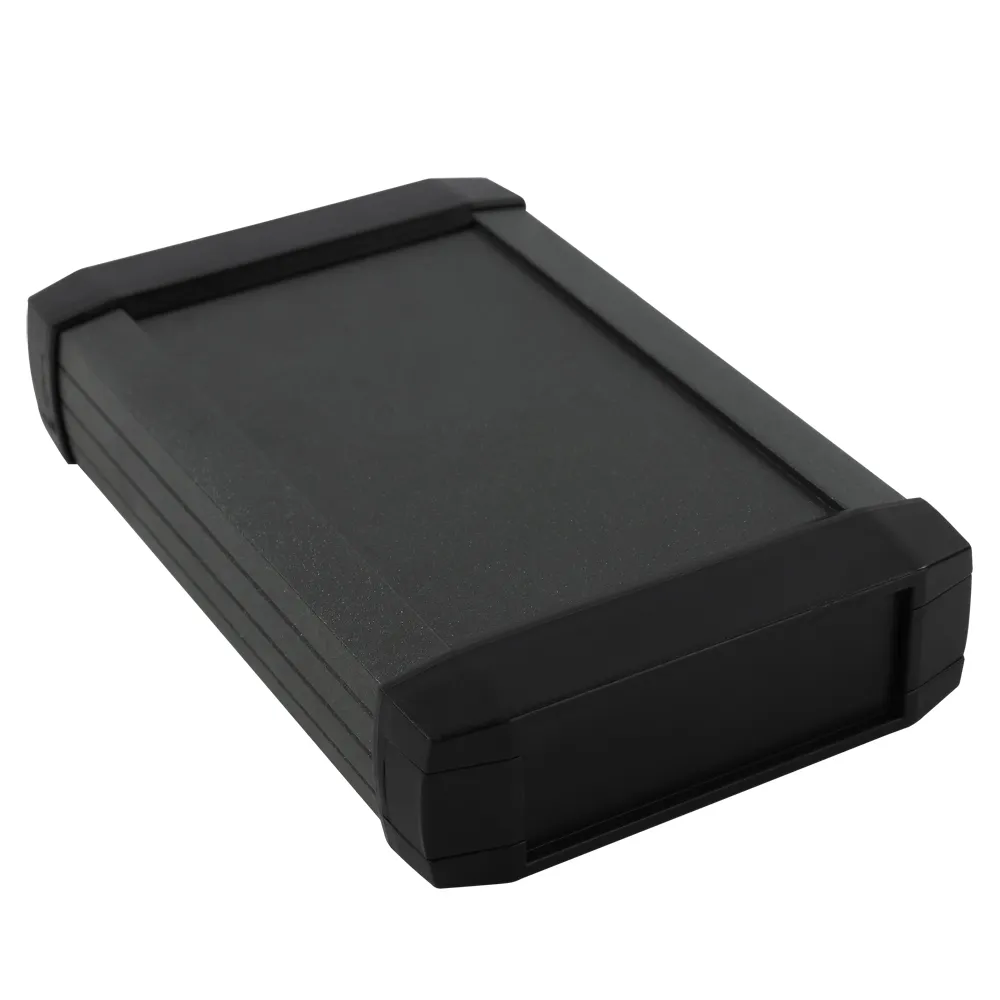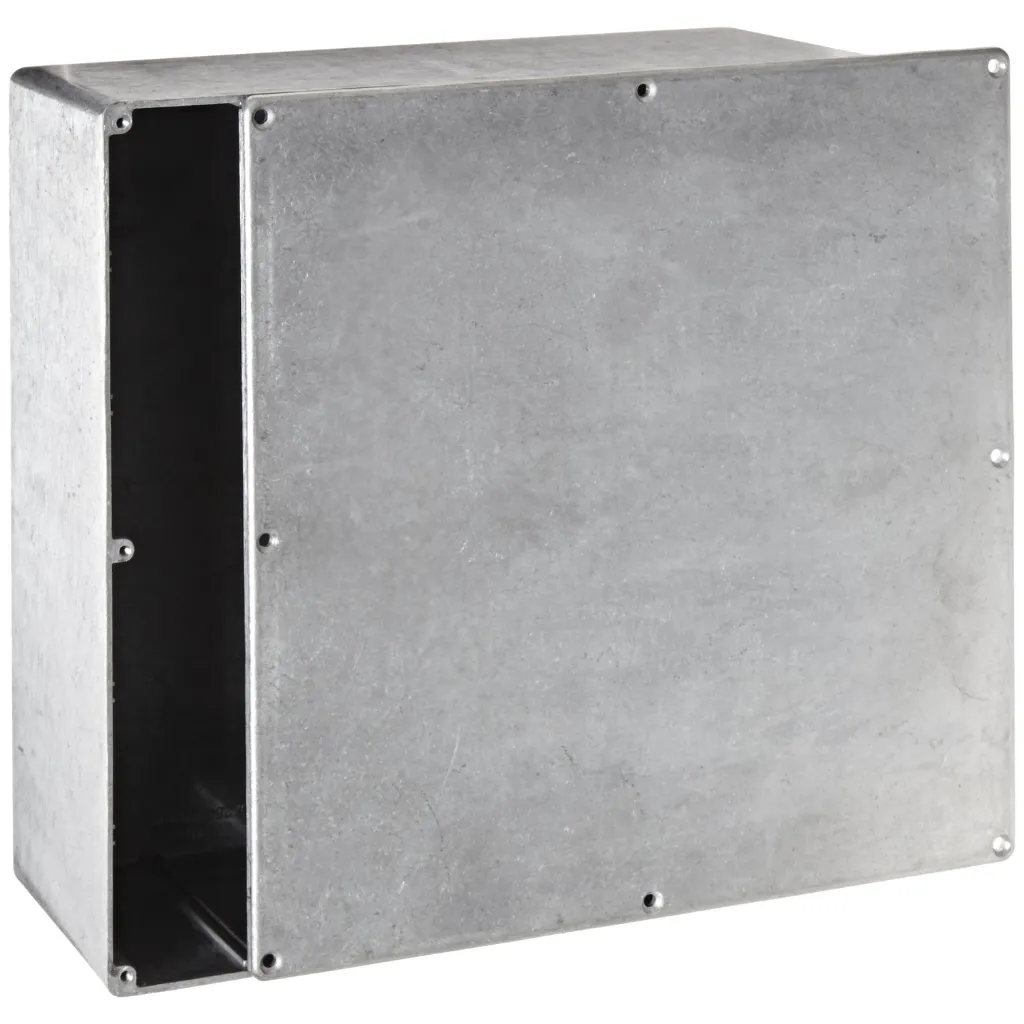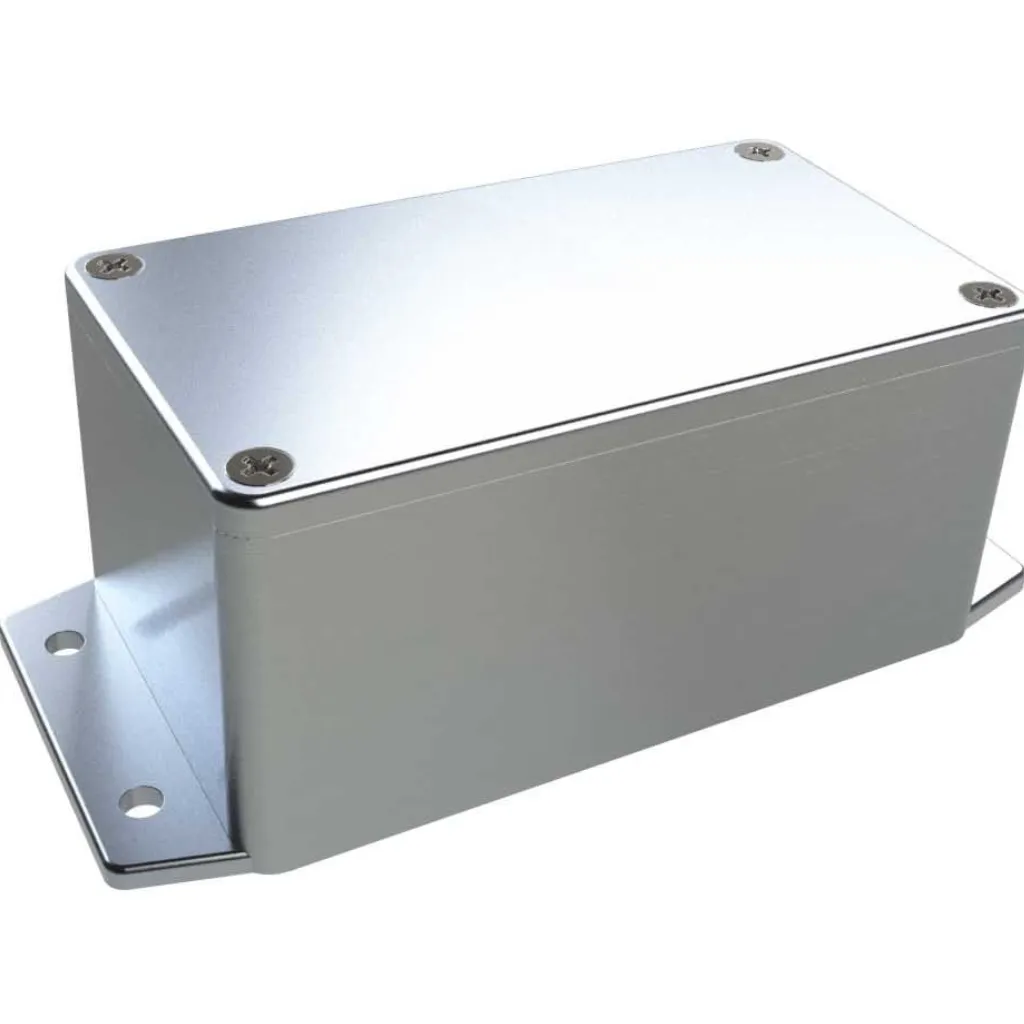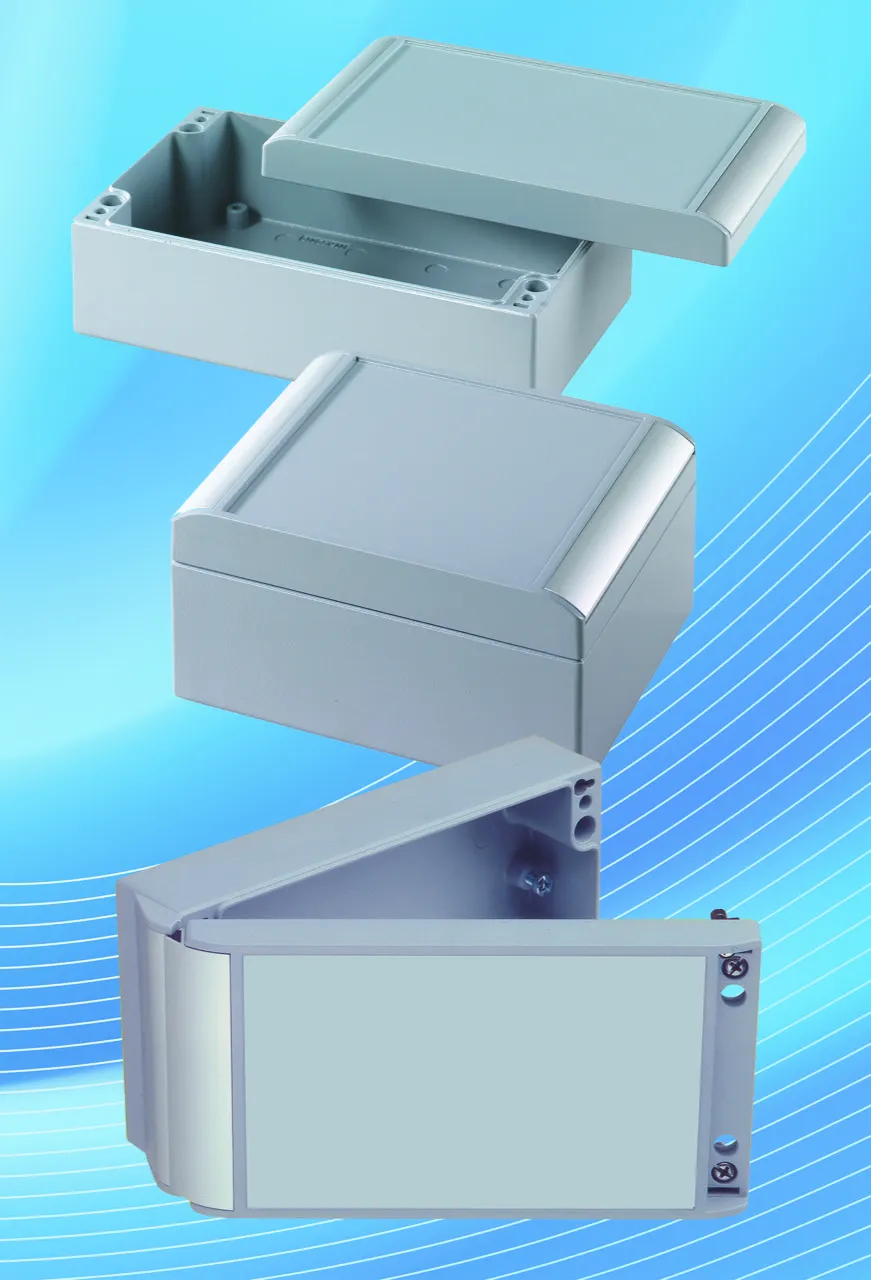Diecast Metal Enclosures What Are They
Diecast metal enclosures are protective housings manufactured using a die casting process, where molten metal is injected under high pressure into a mold or die. This method allows for the creation of complex shapes with high precision and dimensional accuracy. These enclosures are widely used to protect sensitive electronic components, electrical devices, and other equipment from environmental factors such as moisture, dust, impact, and electromagnetic interference (EMI). The die casting process results in a robust and durable product, making them suitable for a variety of industries and applications. The choice of material, design features, and protective ratings are all crucial to the performance and longevity of the enclosed equipment. Selecting the right enclosure is paramount to ensure operational efficiency and safety of the equipment.
Materials Used in Diecast Metal Enclosures
The selection of material is a critical factor in the performance and suitability of a diecast metal enclosure. Several metals are commonly used, each with its unique properties and benefits. These materials influence the enclosure’s strength, corrosion resistance, thermal conductivity, and cost. The choice depends on the specific requirements of the application, including environmental conditions, operating temperatures, and the need for EMI shielding. Some of the most popular options are aluminum, zinc, and steel. It’s important to carefully evaluate these materials to make an informed decision that aligns with the project’s design and performance demands.
Aluminum Diecast Metal Enclosures

Aluminum is a very popular choice for diecast metal enclosures due to its excellent strength-to-weight ratio, good corrosion resistance, and high thermal conductivity. Aluminum enclosures are lightweight, which simplifies handling and installation, particularly in applications requiring portability or where weight is a crucial factor. The natural oxide layer that forms on aluminum provides a degree of corrosion resistance, making it suitable for use in various environments. Furthermore, aluminum’s high thermal conductivity helps dissipate heat, making it ideal for electronics that generate significant heat. These enclosures are often favored in the electronics, aerospace, and automotive industries, offering a balance of performance, cost, and durability. The material is also relatively easy to machine and finish, allowing for customization and integration with other components.
Zinc Diecast Metal Enclosures
Zinc diecast metal enclosures provide excellent mechanical strength and good corrosion resistance. Zinc is a heavier metal compared to aluminum, offering increased robustness and durability. This makes it a suitable choice for applications that need to withstand physical impacts or harsh environmental conditions. Zinc also offers great EMI shielding capabilities, which is crucial in electronics where electromagnetic interference can affect performance. While zinc enclosures can be slightly more expensive than aluminum, their superior mechanical properties and EMI shielding make them an excellent option in specific scenarios. Zinc diecast enclosures are often used in the automotive, electrical, and industrial sectors, where ruggedness and protection are paramount.
Steel Diecast Metal Enclosures
Steel, particularly stainless steel, is used for diecast metal enclosures when applications demand the highest levels of strength and corrosion resistance. Steel enclosures provide exceptional protection against physical damage and are extremely durable. Stainless steel offers superior corrosion resistance, making it ideal for outdoor or harsh environments exposed to moisture, chemicals, or extreme temperatures. Steel enclosures can provide excellent EMI shielding and are often used in demanding industrial applications, such as those in the oil and gas or marine industries. While steel enclosures may be heavier and potentially more costly than aluminum or zinc, their unmatched strength and durability make them a top choice for critical applications where equipment protection is vital. Finishing options, like powder coating, can further enhance corrosion resistance and aesthetics.
Factors to Consider When Choosing Enclosures

Choosing the correct diecast metal enclosure involves several key factors to ensure optimal performance, safety, and longevity of the equipment. Understanding these critical considerations will enable you to make informed decisions that meet the specific needs of your project. From size and dimensions to environmental conditions and features, each factor plays a vital role in the enclosure’s overall effectiveness. A thorough evaluation of these factors will help ensure that the chosen enclosure provides the necessary protection and functionality for your application. Consider the environment, potential hazards, and the specific requirements of the equipment that will be housed within the enclosure to choose the best option.
Size and Dimensions
The size and dimensions of the enclosure must be carefully considered to accommodate the components and devices that will be housed inside. Ensure that the enclosure is large enough to provide sufficient space for the equipment, including any necessary connectors, wiring, and cooling systems. It’s important to account for future expansion or upgrades, allowing for extra space to avoid overcrowding or making the enclosure too tight. Accurate measurements of the equipment’s dimensions, including height, width, depth, and any protrusions, are necessary for determining the appropriate enclosure size. Furthermore, consider the need for accessibility for maintenance, repairs, and adjustments. Proper sizing not only ensures that the equipment fits correctly but also promotes efficient heat dissipation, easier access, and prevents unnecessary strain on components.
Ingress Protection Rating (IP Rating)
The Ingress Protection (IP) rating indicates the degree of protection an enclosure offers against solid objects (dust) and liquids (water). This rating is represented by two numbers, with the first indicating protection against solids and the second indicating protection against liquids. Choosing the correct IP rating is critical to ensure that the enclosed equipment is protected from environmental hazards. For example, an IP65-rated enclosure protects against dust and water jets, while an IP67-rated enclosure offers protection against temporary immersion in water. The selection of the IP rating should be based on the expected environmental conditions, such as the presence of dust, rain, or moisture. Using an enclosure with an insufficient IP rating could lead to equipment damage, malfunctions, and reduced lifespan, so it is important to select an enclosure that meets the requirements of the application.
Thermal Management

Proper thermal management is critical for preventing overheating and ensuring the reliable operation of electronic components housed within an enclosure. Heat buildup can damage components, reduce performance, and shorten the lifespan of equipment. Methods for thermal management include natural convection, forced air cooling, and the use of heat sinks. Aluminum enclosures, with their excellent thermal conductivity, help dissipate heat and reduce the need for additional cooling systems. In applications where higher heat loads are expected, consider using enclosures with built-in heat sinks or fans, or integrating liquid cooling systems. Evaluate the heat dissipation requirements of the components and choose an enclosure and thermal management strategy that effectively prevents overheating and maintains optimal operating temperatures.
Environmental Conditions
The environmental conditions in which the enclosure will operate significantly influence the choice of material and design. Consider factors such as temperature range, humidity, exposure to sunlight, and the presence of corrosive substances or chemicals. For outdoor applications, select enclosures made from corrosion-resistant materials like aluminum or stainless steel, along with appropriate IP ratings to protect against moisture and dust. In environments with extreme temperatures, ensure that the enclosure material can withstand the thermal stresses and maintain its structural integrity. If the environment contains corrosive substances, consider enclosures with specialized coatings or finishes that provide extra protection. Evaluate the specific environmental hazards to choose an enclosure that ensures equipment is protected from external factors that could compromise its performance or cause damage.
Features and Functionality
The specific features and functionality of an enclosure can greatly influence its suitability for the application. Consider factors such as the need for mounting options, access panels, cable glands, and connectors. Mounting options can include wall-mounting, rack-mounting, or floor-mounting, which depend on the installation environment. Access panels and doors provide convenient access to the equipment for maintenance, repairs, and adjustments. Cable glands and connectors are essential for routing cables into and out of the enclosure while maintaining the desired level of protection. Furthermore, evaluate the need for EMI/RFI shielding to protect sensitive electronics from interference. The enclosure should provide any necessary features and functionalities to support the equipment and provide convenient access and ease of maintenance. Customized designs and add-ons may be possible to meet specific needs.
Common Applications for Diecast Metal Enclosures

Diecast metal enclosures are used across various industries, each leveraging their benefits to protect and house sensitive equipment. The choice of enclosure material and features can vary based on the industry’s demands. From electronics and electrical systems to industrial automation and telecommunications, these enclosures offer reliable protection, durability, and versatility. Understanding the typical applications in each industry helps select the best enclosure type for specific needs and ensure optimal performance. The application dictates requirements such as IP ratings, thermal management needs, and the necessity for EMI shielding. Some common applications are discussed below.
Electronics and Electrical
In the electronics and electrical industries, diecast metal enclosures are frequently used to house circuit boards, power supplies, control panels, and other sensitive electronic components. Aluminum enclosures are often selected due to their excellent thermal conductivity and lightweight properties, which help dissipate heat generated by electronic devices. They are designed to offer protection against environmental factors such as dust, moisture, and impact. They also provide EMI shielding to prevent interference with or from other electronic devices. Applications range from consumer electronics to industrial control systems. This requires enclosures with various features, including mounting options, access panels, and cable glands, to streamline installation and maintenance. Selecting the right enclosure ensures that electronic components are secure and that the system’s operational effectiveness is maintained.
Industrial Automation
In industrial automation environments, diecast metal enclosures are used to protect programmable logic controllers (PLCs), human-machine interfaces (HMIs), motor drives, and other industrial control equipment. Steel or zinc enclosures are often used because they provide greater robustness and can endure harsh industrial environments. These enclosures must withstand vibrations, impacts, extreme temperatures, and exposure to chemicals and contaminants. They offer excellent protection against dust and moisture, with high IP ratings to ensure reliable operation. Key considerations include providing mounting options, cable management, and thermal management solutions to meet the specific needs of the industrial application. The choice of an enclosure that withstands rigorous conditions is vital to maintaining the reliability and efficiency of automated processes.
Telecommunications

Diecast metal enclosures are frequently employed in the telecommunications industry to protect sensitive networking equipment, such as routers, switches, and communication devices. These enclosures must provide both physical protection and EMI shielding to guarantee uninterrupted service. They are typically constructed of aluminum or zinc, providing a balance of weight, strength, and electromagnetic interference protection. These enclosures are often used in outdoor environments, and so the IP rating is of critical importance for protection against environmental conditions. Features such as secure locking mechanisms and cable management are essential for maintaining the security and accessibility of the equipment. Choosing the correct enclosure will protect networking equipment from environmental factors, ensure network reliability, and provide for the ease of maintenance and system upgrades.
Best Practices for Selecting Diecast Metal Enclosures
Selecting the right diecast metal enclosure involves implementing several best practices to ensure it meets the specific requirements of the application and provides the necessary protection and functionality. This process involves careful planning, thorough research, and expert consultation. Following these recommendations will ensure that the selected enclosure provides a solid and reliable solution for protecting equipment, preventing problems, and optimizing system performance. From consulting with specialists to reviewing technical specifications and comparing vendors, following these practices will help you choose an enclosure that meets the performance requirements of your project.
Consulting with Experts
Consulting with enclosure manufacturers or experienced professionals can provide invaluable assistance in the selection process. These experts can provide guidance on the most suitable materials, sizes, and features based on the specific needs of the application. They can assess environmental conditions, heat dissipation requirements, and the need for EMI shielding to recommend the most appropriate solutions. They can also provide insights into design considerations, customization options, and potential cost-saving opportunities. Their expertise will help to avoid errors in the selection process and guarantee that the chosen enclosure meets the project’s unique requirements. Engaging with experts ensures that you are making an informed decision based on industry best practices and the latest technological advancements.
Reviewing Specifications

Thoroughly reviewing the technical specifications of potential enclosures is a critical step in ensuring they meet the required performance standards. This includes examining the dimensions, IP ratings, material properties, thermal management capabilities, and any other relevant features. Pay close attention to the enclosure’s ability to withstand environmental conditions, such as temperature variations, humidity, and exposure to corrosive substances. Also, assess the enclosure’s compliance with industry standards and certifications. Comparing the specifications of different enclosures will help you make an informed decision and ensure that the chosen enclosure has the correct features and performance for your application. Reviewing specifications carefully guarantees that the enclosure will provide the necessary protection, reliability, and ease of use.
Comparing Vendors
Comparing different vendors is a vital step in the selection process, as it can help to identify the best product and the best overall value. Consider factors such as price, lead times, customization options, and the vendor’s reputation for quality and customer support. Check to see if the vendor provides any case studies or examples of their products in similar applications. Requesting samples or prototypes can help assess the quality and fit of the enclosure. Evaluating multiple vendors can enable you to negotiate the best price and terms, select the appropriate enclosure for your requirements, and create a successful partnership. Proper vendor evaluation will help you make a decision that will bring success to your project.
